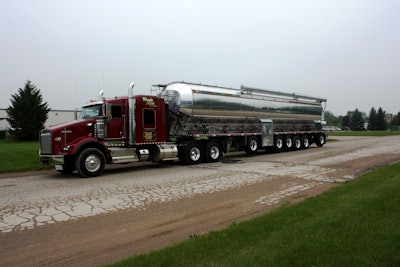
The National Grain and Feed Association (NGFA) commends the Federal Motor Carrier Safety Administration (FMCSA) for issuing its long-awaited final rule on changes to driver hours-of-service regulations with reforms that will increase driver flexibility and facilitate the availability of truck transportation, which moves the vast majority of agricultural freight.
“FMCSA’s final hours-of-service rule should improve trucking efficiency and expand trucking capacity,” NGFA notes. “The decision to increase the air-mile radius to 150 miles (172.6 statute miles) for the short-haul exemption is particularly important for drivers transporting agricultural products that are ineligible for the agricultural exception to the hours-of-service rules, such as processed products like soybean meal, distillers grains and flour. Expanding the short-haul exemption greatly increases its usefulness for agricultural haulers across the country.”
NGFA noted that truck drivers transporting agricultural products make use of the agricultural exception and the short-haul exemption to the hours-of-service rule. The agricultural exception allows drivers to avoid maintaining a time record or logbook for the portion of the haul that is within 150 air-miles of the origin. However, the agricultural exception is restricted to instances when a driver is transporting agricultural commodities, non-processed food, feed, fiber, livestock or farm supplies; processed agricultural commodities do not qualify. When a driver is unable to use the agricultural exception because the cargo does not qualify, the short-haul exemption is useful because it enables drivers to use a time record in place of a logbook, the association said.
NGFA submitted comments to FMCSA throughout the rulemaking process. The final rule makes the following positive changes to the existing hours-of-service rules:
- Increases the air-mile radius of short-haul trucking from 100 air miles to 150 air miles and expands allowable work shift from 12 hours to 14 hours, but maintains an 11 hour limit on driving time;
- Allows drivers, under certain adverse driving conditions, to extend their driving window by up to two hours;
- Provides more flexibility to drivers’ 30-minute rest period requirement;
- Makes modifications to the split sleeper berth provisions of the rule allowing greater flexibility for how a driver splits their sleeper berth time.
The 230-page final rule is scheduled to go into effect 120 days after it is published in the Federal Register.

















